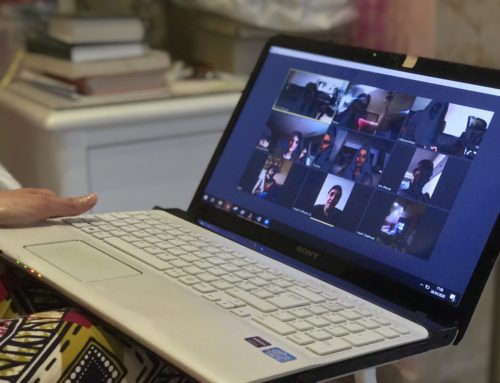
Peter Panepento
As much as we wish our nonprofits would be looked at for impact as opposed to overhead, how much nonprofits spend (or lose) is a story the media love to tell. In this month’s post Peter Panepento tells you how to be prepared when your nonprofit’s salaries make the news. ~Kristina
Guest Post by Peter Panepento of Panepento Strategies
Who are the highest-paid charity executives in your city?
You’ve probably seen a variation of this question plastered in large point across the front page of your local newspaper. And if you work for a nonprofit of some size, chances are your executive director or CEO has had her name and salary broadcasted under that headline.
Charities hate this story — and for very good reason. It takes the public’s focus off of their work and mission and sends the message that its employees are there to line their pockets, not to do good.
This story implies that you’re up to no good, even though your director is probably commanding a much lower salary than she would earn in the business world and she needs to be compensated for her work.
Unfortunately for charities, though, many reporters and editors love this story. It shows that they’re fulfilling their role of watchdog — protecting the interests of their readers by scouring public data and sharing it.
And it’s about to get worse for peeved PR officials.
The IRS will soon begin releasing electronic versions of its Form 990 tax filings — a move that will make it much easier for the public to look up information about your nonprofit online.
For those of us who support public information, this is a welcome move.
But it comes with a downside for charities, since it will make it much easier for news outlets to search for and publish lists of charity salaries — not to mention stories that look at overhead ratios and other parts of your nonprofit’s financial picture.
I’ll refrain from making this post a debate about nonprofit overhead, since our goal here it to talk about nonprofit media relations.
However, it is important to understand that now, more than ever, your charity needs to be prepared to talk about its financial picture, its salary structure, and how it spends its money. After all, electronic data is only going to make it easier for reporters and bloggers to dig into your financial information.
Unless you’re able to present your story in the proper context, you could soon be facing a public backlash over how much money you spend on fundraising or what you pay your leaders.
It’s dangerous to wait until a reporter picks up the phone to call you seeking comment.
Instead, you should be finding ways to shape your own financial narrative.
Here are 4 things you can be doing now to ensure that you’re prepared to talk about your charity’s finances:
Be open
Not long ago, you could get away with making the public come to your office to request access to your Form 990. But with 990s being available through Guidestar and other sites, it looks like you’re trying to hide something if you’re not at least making your public tax forms easy to find on your website.
Many charities are going much farther than that by posting key financial metrics and audited financial statements on their sites. Making these resources accessible sends a strong signal to prospective donors and reporters that you’re being open and transparent about your work.
Explain what you do
Reporters will be less skeptical of your organization’s motives if they can understand what you do and how you do it.
Many organizations use jargon or flowery mission statements to describe their work — but they don’t take the time to describe what they are working on in clear English.
Along with your financials, include some basic information about your work and why you exist.
Quantify your results
Overhead and fundraising ratios exist because people want to try to make sense of whether charities are working effectively. But many charities complain that these measures don’t properly quantify their accomplishments or reflect their effectiveness.
Instead of complaining, offer an alternative. Post clear, quantifiable results on your website — and find opportunities to include those figures in your regular communications.
If you can show your effectiveness at turning donations into results, providing innovative solutions to a common problem, or addressing a problem that nobody else is working to solve, you change the narrative and show how you’re being effective.
Make these metrics easy to find. Use them in your stories and in your executive director’s speeches. And have them ready to go when you get the inevitable call from a reporter about your overhead ratio.
Explain why
Don’t let the public guess why your organization posted an operating loss last year, your CEO received a bonus, or your fundraising costs were higher than normal.
Often, organizations have good reasons for these conditions. Rather than putting the numbers out there and hoping nobody will question them, offer some explainers.
One way to do this is to create a year-in-review document that shows your top-level numbers and explains what was different this year.
If you’re upfront, people are more likely to trust you. If it looks like you’re trying to hide something or won’t provide a clear explanation, you’re inviting skepticism.
You might feel as though you’re calling unnecessary attention to yourself, but it’s better to own your own narrative than it is to have someone else choose your narrative for you.
How does your organization talk about its finances and its impact? I’d love to see what you do — and answer your questions about how you can be more effective in telling your story.
Peter Panepento is principal at Panepento Strategies, a full-service content, digital, and social strategy firm for nonprofits and socially-minded companies. He was formerly an assistant managing editor at the The Chronicle of Philanthropy, where he led its transition into digital journalism and social media — a transition that included the creation of some of the nonprofit world’s richest online communities, the launch of a highly profitable webinar series, and the creation of new digital products such as the How America Gives giving database.






